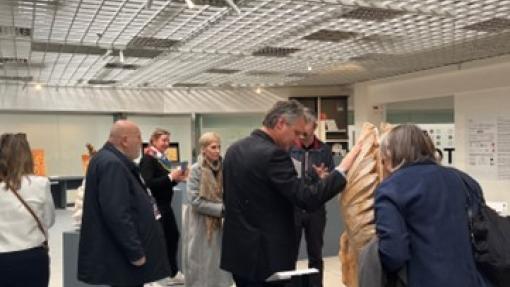On April 11, Informest offered the cross-border public an opportunity to reflect on how digital technologies can innovate the experience of cultural heritage, making it increasingly accessible and engaging, through a series of afternoon visits as part of the event "Beyond Borders: Immersive Experiences between Italy and Slovenia."
The first stop took place at the Castle of Gorizia, where participants experienced firsthand the integration of tradition and innovation. The museum, already a landmark in the area, demonstrated how immersive tools can enhance the visitor’s journey and highlight historical content from the tablet that guided the narrative through the exhibition, to augmented reality headsets, and the immersive room that recreates historical battle scenes with video projections, sounds, music, and light effects, offering a truly engaging, multi-sensory experience.
The second stop brought participants to the Tactile Gallery of the Goriški muzej, home to the exhibition “Art Beyond the Visible,” an inclusive, multi-sensory cultural experience designed to go beyond the boundaries of visual perception. Thanks to the use of new technologies, visitors can explore art through touch, smell, and hearing. Every artwork can be touched, smelled, or listened to, allowing for a direct and profound approach rarely possible in traditional museums.
The final stop took the group to Miren, on the border between Italy and Slovenia, to visit the Museum on the Border, the region’s first dot museum. This innovative space combines accessibility, autonomy, and technology. It is designed to be fully accessible without on-site staff, thanks to a QR code at the entrance. Inside, interactive screens display interviews and stories from local residents, offering an authentic look into the history of the border and the experiences of local communities, bringing to light stories and places that might otherwise remain hidden.

